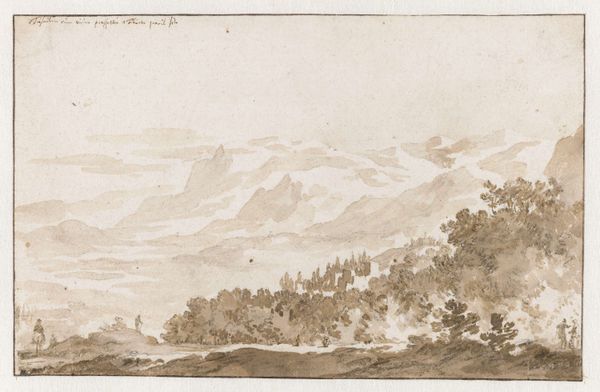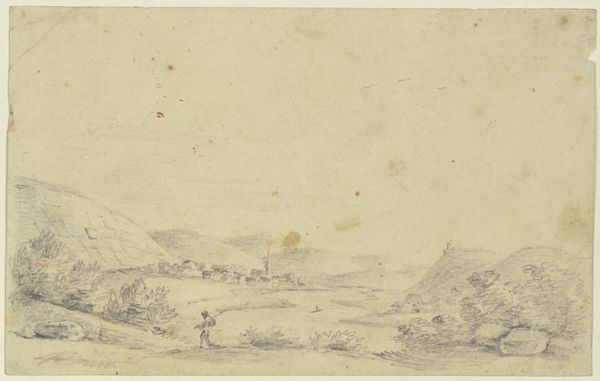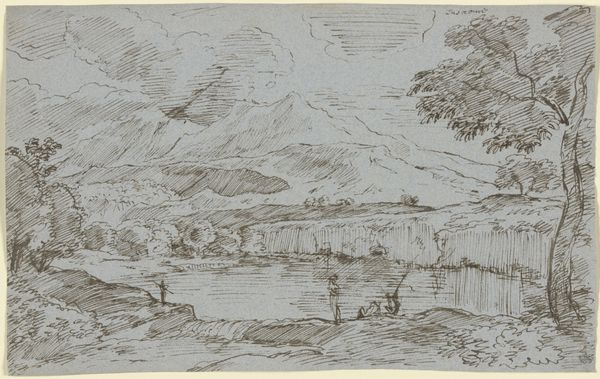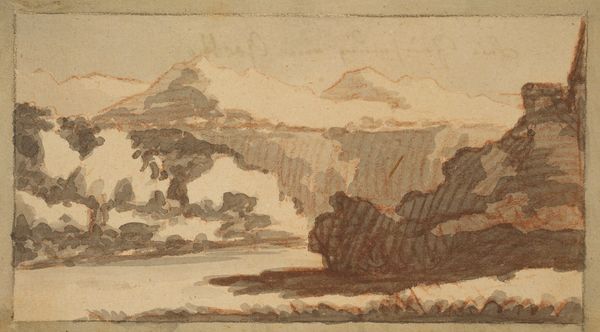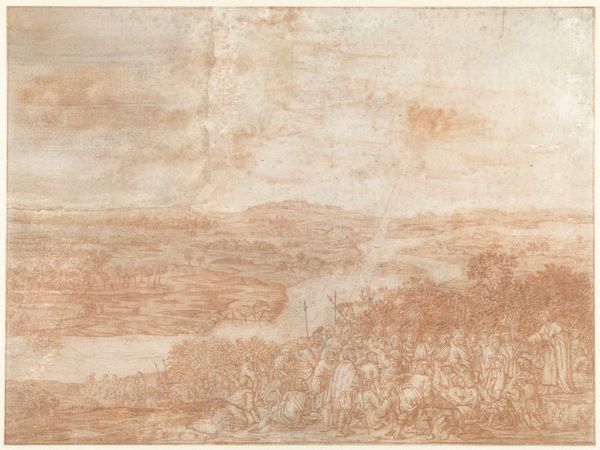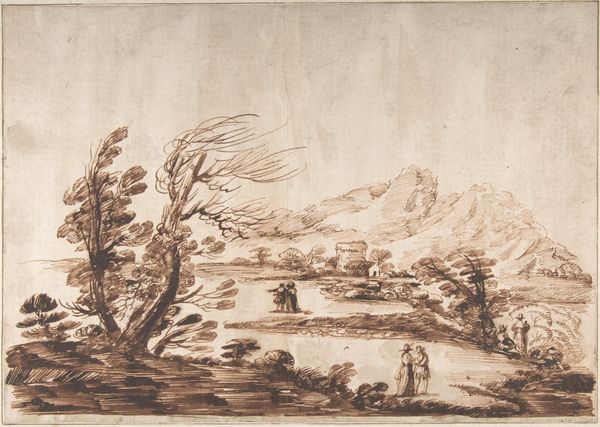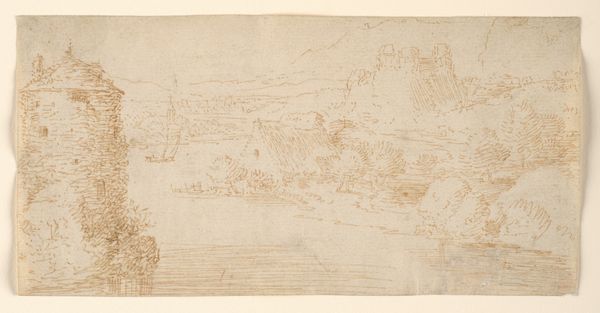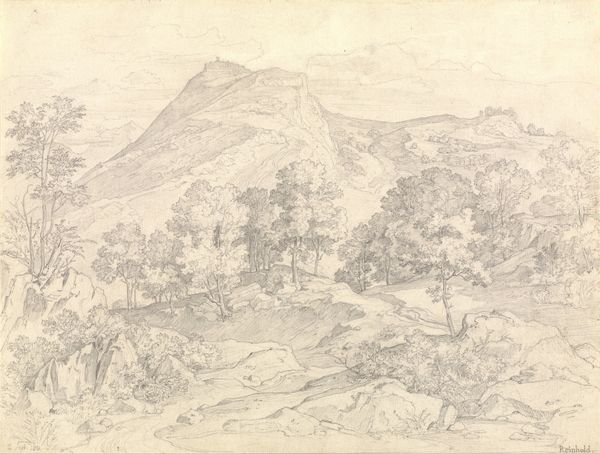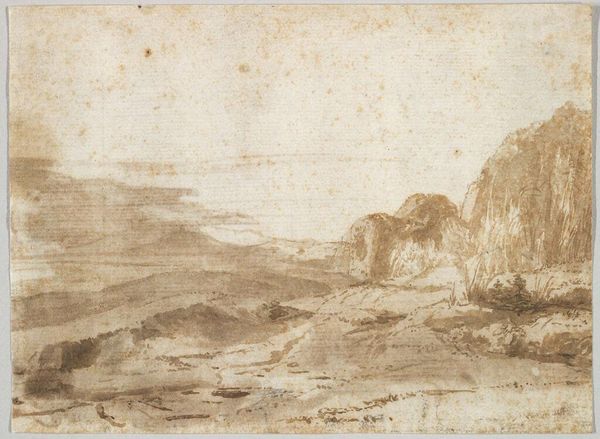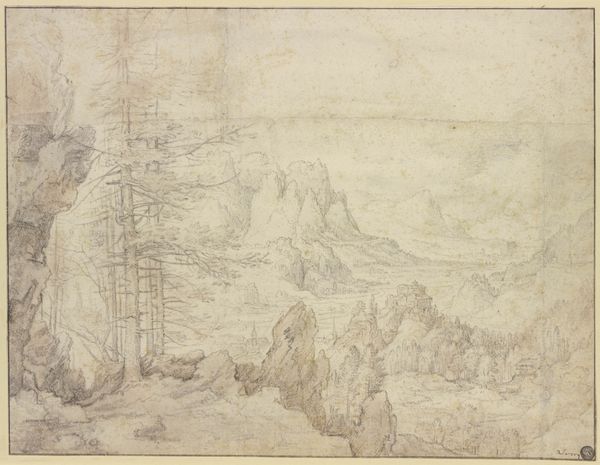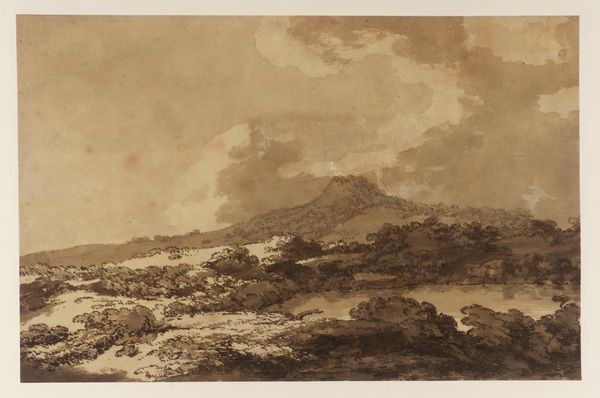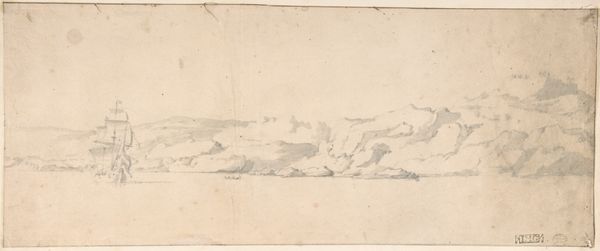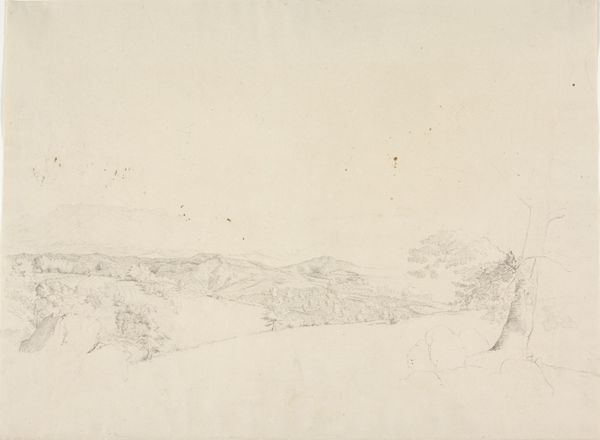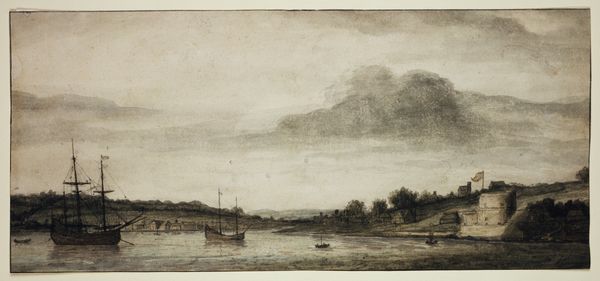
drawing, painting, ink
#
drawing
#
baroque
#
painting
#
landscape
#
ink
#
mountain
#
building
Copyright: Public Domain
This landscape was made by Claude Lorrain, likely sometime in the mid-17th century, using ink on paper. The sepia ink and its application play a crucial role in creating depth and atmosphere, giving a sense of classical antiquity. Note how Lorrain varies his marks, from the delicate hatching on the distant hills to the broad washes defining the foreground. The ink is not just a medium for depicting the scene; it is integral to its emotional impact, creating a melancholic and reflective mood. Lorrain's technique reflects a highly skilled tradition, rooted in close observation and careful craftsmanship. The labor involved is evident in the precision and control of the ink washes, transforming the paper into a window onto an idealized world. Paying attention to the materials and processes used by Lorrain allows us to move beyond the image itself, and appreciate the artistry that brings this landscape to life.
Comments
stadelmuseum about 2 years ago
⋮
The building is the same as the one in the previous drawing, but seen here from a shorter distance, directly from the opposite side of the river. On the right-hand side, parts of the hills and the river lie underneath the dark grey wash, which indicates that the trees and the river bank beneath them were subsequently added in a dark wash, in order to complete the composition. If these drawings originally came from a sketchbook, the figures on the back may have been added later; if it was created as a single sheet, however, it is more likely that Claude reused a sheet of paper on which he had already made a drawing. The large shadow that shines through from the landscape drawing on the back suggests that the landscape was drawn later. Both drawings were probably made at the same time. In view of the relationship between the figures on the back and the painting of a coastal scene dating from 1639 (MRP 44), which Roethlisberger has pointed out, it seems likely that they date from about 1639.
Join the conversation
Join millions of artists and users on Artera today and experience the ultimate creative platform.
